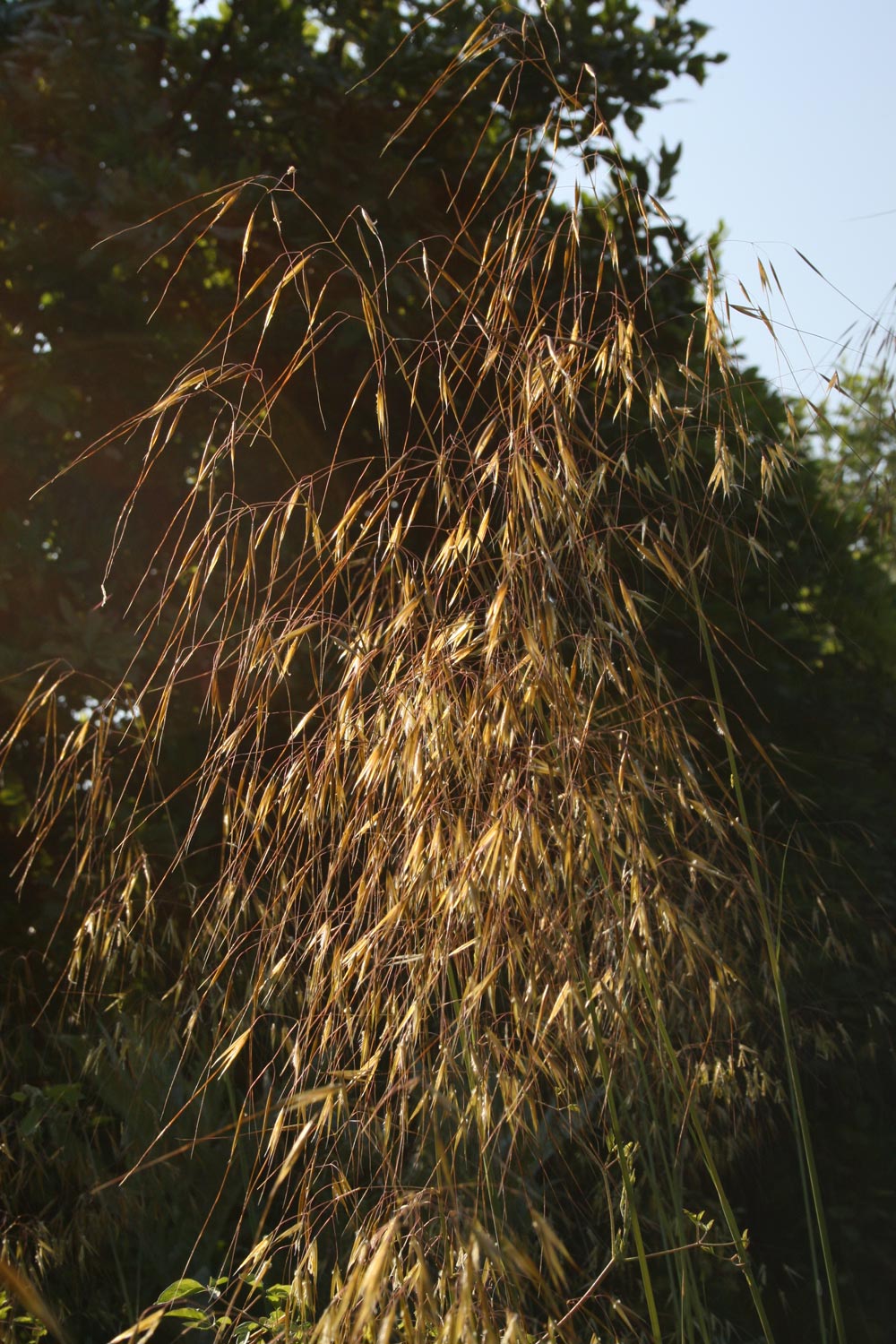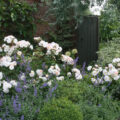by Sally Gregson
Many gardeners have been growing fashionable, ornamental grasses in their gardens since the turn of this century. Grasses suddenly ‘took off’ and became part of every modern border. And for good reason. Tall grasses lend movement. They spill the wind. They become part of a garden’s dynamic. And yet some gardeners are still a little worried by the spreading, seeding ways of some members of the tribe. However, two decades of experience have proved most to be valuable garden perennials. They are the stars of late summer and autumn borders, and their faded, straw-coloured clumps hold well into December out of the wind.
One of the finest ‘statement’ grasses is Stipa gigantea. This elegant grass makes an evergreen, 40cm clump of basal leaves, and by mid-summer produces airy, 2m awns of flowers. They remain on the plant well into autumn until the winter gales fell their seedheads. The seeds are, however, not viable, and so this elegant grass makes a non-spreading, elegant specimen plant.
In late summer and autumn many other ornamental grasses bear sterile seed pods, and the perpendicular structure of the awns lends an upright element to a border. And they move. They are dynamic. Asters, phlox, heleniums – all the usual late border beauties, are static until they fade away for winter. But plant Panicum virgatum ‘Shenandoah’ among them and their open panicles of tiny, dark red flowers and reddening leaves, dance around them in the late summer breezes. Or try a few upright tussocks of Deschampsia cespitosa with arching stems of silver-purple flowers among the heleniums. Neither self-seeds, nor do they have invasive roots – and both are a similar height and would make good companions in a sunny bed.
If there is a particularly appealing grass that deserves to be placed around the garden, grow it on for a year or two to bulk it up. Then lift it and split it up in the spring. Many grasses fail to re-establish in autumn. They seem to prefer to get their roots into well-drained, fertile soil as soon as the seasons warm up.
Many grasses prefer sunshine and good drainage, but not all. Foremost among the shade-lovers is the Japanese grass Hakonechloa macra ‘Aureola’. Despite its bamboo heritage, it makes big, discrete, 40cm clumps of yellow variegated foliage like a golden fountain. In the shade. It is deciduous, and associates well with sky-blue Corydalis elata in late spring, and the ‘black grass’, Ophiopogon planiscapus ‘Nigrescens’ all year round.











Leave a Reply